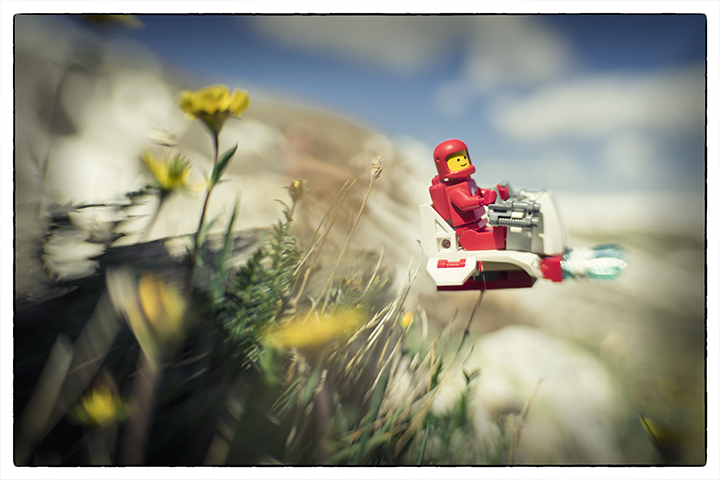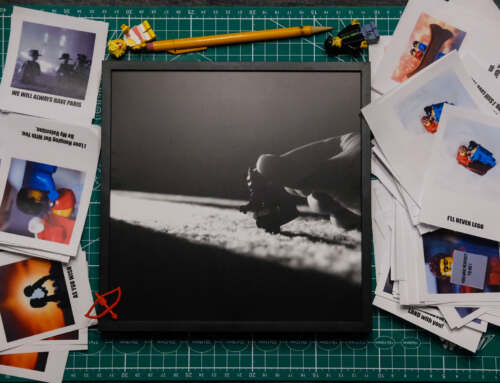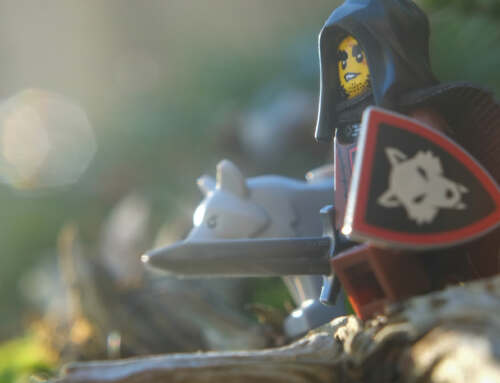Recently I ran across a concept that helps me understand my fascination with the LEGO minifigure. It’s called “masking.” When I first read about masking in Understanding Comics by Scott McCloud, it was a true lightbulb moment. I finally understand why I stick with LEGO minifigures as the primary muse of my creativity. While I love the details and articulation of more expensive action figures, they don’t help me tell my stories. The concept of masking helps me understand my creative process. In my struggle to see why I do what I do, this information is priceless.
What is masking?
Masking is a concept that builds on our understanding that the human mind will recognize a face in just about anything. From a light socket to a garbage can, the human mind will create a face where often there isn’t one. Think of the #iseefaces hashtag.
This is an important concept to exploit when it comes to cartooning. Cartoons are drawn on a continuum, from ultra-simplistic to hyper-realistic. But by making the face on the abstract end of the spectrum, the viewer can experience the story through the eyes of the characters.

Does this make sense? The more universal the protagonist is, the easier it will be for a viewer to place themselves into the scene. Which will then make it easier for artist to make the all-important connection with the viewer. For example, a beautifully sculpted Princess Leia action figure from Hot Toys will always be Carrie Fisher. While the same character represented as a LEGO minifigure is more anonymous and often easier to identify with.
This concept of increased viewer identification with an abstract character versus a hyper-realistic one explains our acceptance of masked superheroes. Spider-Man and Iron Man are two of the most popular characters in the Marvel Universe. I wonder if this idea of masking helps us connect with those characters in a more intimate way?
Why I use LEGO
Everyone has their own reasons for photographing toys. Reasons I hear often are:
- Connecting with their childhood
- Playing director of their favorite movie franchises
- Practicing photography techniques on a willing subject
There are many excellent reasons to photograph toys. I photograph toys as a way to connect with my audience. I want to use our common stories, our universal experiences, our favorite toys, plus a little humor to reach across the digital divide and connect. While LEGO minifigures have a limited range of motion, this concept of masking / abstraction / universality makes them the perfect subject for my needs. They are both recognizable and abstract.
“By stripping down an image to its essential “meaning,” an artist can amplify that meaning in a way that realistic art can’t.”
Scott McCloud – Understanding Comics
Using masking / abstraction as one tool in the storyteller’s toolbox hit home like an arrow. It was a true “ah ha” moment. I can now say with confidence that I choose the LEGO minifigure because of masking. By using a toy that is simplistic and relatable to a wider audience, I have a greater chance of connecting with my audience.

Of course it’s complicated and I probably don’t do this subject justice. If this concept intrigues you, I highly recommend picking up Understanding Comics and exploring it further. I love this idea of masking. It explains so much of why I’m not investing in those super-cool, hyper-realistic, collectible toys. While beautiful and amazing, they wont help me achieve my own creative goals.
What do you think about masking? Does it make sense? How can you use it in your own creative work?

Image taken with a Lensbaby Composer / Sweet 35, f4, 1/50, ISO 100 in Central Park, NY while on holiday earlier this year.







Understanding Comics is such a brilliant, genius book! McCloud uses the “smiley face” as his most simple example of this masking concept. And lo and behold, LEGO minifigs, especially the classic ones, basically have smiley faces for heads! As you point out, when our brain sees “face” and not “so-and-so’s face,” we are much more likely to inject ourselves onto that face. Great post. I hope people will pick up Scott McCloud’s seminal text after reading it. Every artist and/or comic fan should read it.
I agree Oliver – when I read Understanding Comics I was instantly impressed. There is a reason this book is the standard of the industry for so many years. I think anyone who is interested in visual storytelling needs and I mean *needs* to read it!
Masking is such a simply concept, but difficult to explain. Im not the word smith that MacCloud is. Im glad you ‘get’ it!
Thanks for commenting Oliver – you are a man of great tastes!
I’ve not heard of this concept of “masking” before, but now that you’ve explained it, it does make a great deal of sense.
I never considered the intricate vs simplistic nature of a figures face to affect the viewer in that way.
Truly fascinating!
Dave I can’t do this subject justice. I hope you will pick up a copy of Scott’s book and take a a closer look at this idea. Masking is such an important part of visual storytelling. Personally I see ALL toy photographers as essentially visual storytellers. So it’s important to know what tools we have at our disposal. Thanks for reading and commenting!
While I am still pondering putting “Understanding Comics” to work for toy photographers, you did it, Shelly! Brilliant! Interestingly enough, you chose the part that I found the least convincing when I read it in the Comic. I tend to find psychologising suspicious, so McCloud kind if left me when he talked about us experiencing in a cartoon-like, abstract manner. That might be or might not be. I’d be willing to venture on a phenomenological exploraton of that matter… However, the way you present it, I find it plausible. Kudos.
Interesting concept, Shelly and might well be a large part of why the minfig is my go-to toy as well! I am fascinated by the realistic figures out there but I almost always wind up leaving them on the shelf.. Could explain my recent interest in the smiski figures too. I’m going to have to ponder this. Thanks for the article!
I’m not sure is it the same concept as masking but I was reaing about pareidolia, which is tendency to see for example images of animals, faces, or objects in cloud formations or seeing faces in inanimate objects. I see such faces very often
As the fellow LEGO minifigures photographer I find masking very useful, because most of the minifigs have universal faces and it’s the context of photo that may imply certain emotion or state..
I have to check that book! Thanks!
Shelly great article. I agree with the last bit about the Stormtrooper. I do believe photographers use them as the “everyman” often. We touched on it a little bit on the IAMSPIDERMAN podcast episode, the choice to use the stormtrooper creates both a stripping of identity and a it can be anyone one at the same time. They become a mask within a mask in that sense.
OK… I confess at first I was wondering why you would be writing a post about photoshop. ? I had no idea about this concept, but find it intriguing to be sure. And, after thinking about it, I can definitely see how LEGO lends itself towards being universal. I feel it so much easier to insert myself as the character with LEGO as opposed to action figures that are so detailed (like your Princess Leia example). Perhaps that’s why I don’t have any action figures. ?